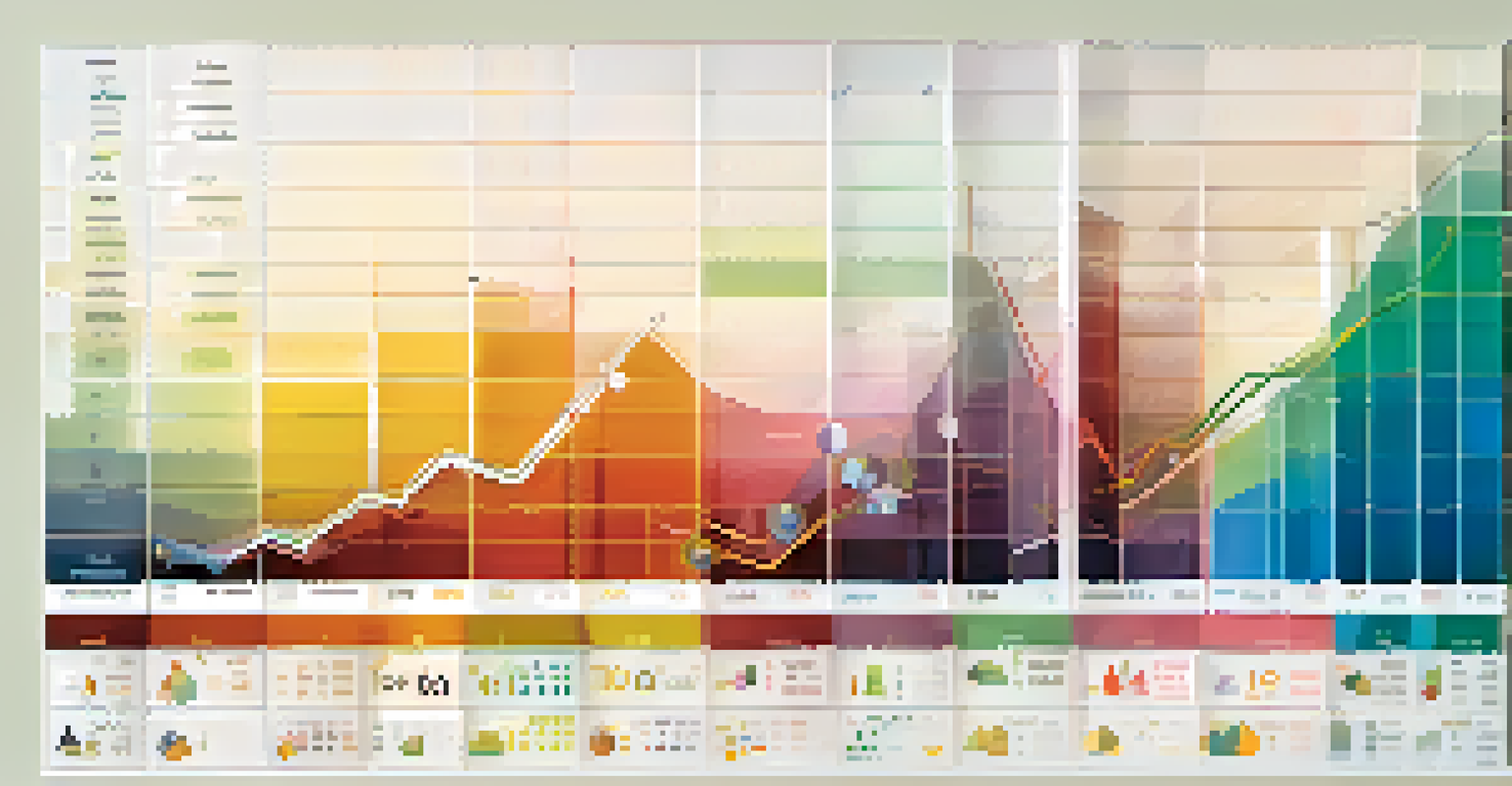Recognizing Market Cycle Patterns: A Guide for Investors

Understanding Market Cycles: The Basics for Investors
Market cycles refer to the predictable movements that financial markets undergo over time. These cycles typically consist of four main phases: accumulation, uptrend, distribution, and downtrend. Recognizing these phases can significantly enhance your investment strategies and help you make informed decisions.
The stock market is filled with individuals who know the price of everything, but the value of nothing.
Think of market cycles like the changing seasons. Just as winter leads to spring, which then flows into summer and fall, markets also transition through their own cyclical patterns. Understanding this concept can prepare you for the inevitable ups and downs in the investing landscape.
Investors who grasp market cycles can better time their entry and exit points, ultimately leading to improved returns. By being aware of where the market stands within its cycle, you can avoid common pitfalls and capitalize on opportunities that arise during each phase.
The Accumulation Phase: Laying the Groundwork
The accumulation phase is where savvy investors start buying assets at lower prices, often unnoticed by the general public. This phase typically follows a downtrend and is characterized by market consolidation, where prices stabilize. It's during this time that informed investors begin to see value before the masses catch on.

Imagine a gardener preparing the soil before planting seeds. This period is crucial for nurturing potential growth. Investors who recognize this phase can position themselves advantageously, as they are essentially buying the seeds that will blossom in the future.
Market Cycles and Their Phases
Understanding the four main phases of market cycles—accumulation, uptrend, distribution, and downtrend—can enhance investment strategies.
Identifying the accumulation phase involves looking for signs of increased buying activity and reduced volatility. By paying attention to these indicators, you can take advantage of lower prices before the market shifts into a more bullish phase.
The Uptrend Phase: Riding the Wave of Growth
Once the accumulation phase concludes, the market enters the uptrend phase, marked by rising prices and increased investor confidence. During this phase, demand outstrips supply, leading to higher valuations across the board. It's the phase where many investors experience the thrill of profit as their investments begin to flourish.
In investing, what is comfortable is rarely profitable.
Picture yourself riding a wave at the beach. The uptrend is that exhilarating moment when you catch the perfect wave. It’s essential to stay balanced and ride it as long as possible, but be aware of when the wave starts to lose momentum.
To maximize gains during an uptrend, keep an eye on market sentiment and economic indicators. Recognizing when this phase reaches its peak can help you decide when to take profits or prepare for a potential downturn.
The Distribution Phase: Time to Take Profits
Following the uptrend, the market enters the distribution phase, where savvy investors begin to sell off their assets at peak prices. This phase often signals that the market is nearing its highest point, as enthusiasm wanes and supply begins to outpace demand. It's a crucial time for investors to evaluate their positions and lock in profits.
Think of this phase as an artist putting the final touches on a masterpiece. Just as an artist knows when their work is complete, investors must recognize when it's time to sell. Selling during this phase can protect gains and prevent losses when the market eventually turns.
Indicators Signal Market Changes
Key indicators like trading volume and price patterns are essential for identifying the current phase of the market cycle.
Indicators of the distribution phase include increasing volatility and a shift in market sentiment. By being alert to these signs, you can make informed decisions about when to exit your positions to maximize your investment returns.
The Downtrend Phase: Navigating Market Declines
After the distribution phase, the market typically enters a downtrend, characterized by falling prices and diminishing investor confidence. This phase can be daunting, but it also presents unique opportunities for astute investors. Understanding how to navigate this phase can help you weather the storm and potentially benefit from lower prices.
Consider the downtrend phase like a winter season where everything seems bleak. However, this time can be used to reassess your strategies and identify undervalued assets that may thrive when the market recovers. Many successful investors find the best bargains during this phase.
Recognizing a downtrend involves monitoring market sentiment and economic indicators. By remaining vigilant and open-minded, you can position yourself advantageously for the next accumulation phase, ensuring you’re ready to act when the market rebounds.
Key Indicators for Identifying Market Cycle Phases
Identifying the phases of market cycles requires a keen eye for specific indicators. Key metrics such as trading volume, price patterns, and economic data can provide valuable insights into where the market might be headed. Familiarizing yourself with these indicators can significantly enhance your investment decision-making process.
Think of these indicators as road signs guiding you through the twists and turns of the investing landscape. Just as you wouldn’t drive without paying attention to signs, investors must also heed these signals to navigate market cycles effectively.
Patience is Key to Investing Success
Cultivating patience and discipline in investing can help navigate market fluctuations and align actions with long-term goals.
For example, rising trading volume often accompanies price increases during the uptrend phase, while declining volume can indicate a potential reversal. By closely monitoring these signs, you can gain a clearer picture of the current market cycle and adjust your strategies accordingly.
Developing a Strategy Around Market Cycles
Developing a robust investment strategy that accounts for market cycles is essential for long-term success. By understanding where the market stands in its cycle, you can make more informed decisions that align with your financial goals. This proactive approach can help you capitalize on opportunities while minimizing risks.
Imagine crafting a roadmap for a long journey. Just as you would plan your stops based on the route, a well-structured investment strategy should include entry and exit points based on market cycle awareness. This foresight can lead to more disciplined trading and improved outcomes.

Incorporating market cycle analysis into your strategy means continuously educating yourself, staying informed, and being flexible. Markets are ever-changing, and the ability to adapt your approach as conditions evolve is key to achieving investment success.
The Importance of Patience and Discipline in Investing
In the world of investing, patience and discipline are virtues that can lead to significant rewards. Understanding market cycle patterns requires time and observation, and it's crucial not to rush into decisions based on emotions. Sticking to your strategy during turbulent times can help you stay focused on your long-term goals.
Consider a marathon runner pacing themselves for the long haul. Just as they train and prepare for the race, successful investors must also cultivate patience and discipline to navigate market cycles effectively. This mindset can prevent you from making impulsive decisions that might derail your investment journey.
By fostering these qualities, you can build resilience against the inevitable ups and downs of the market. Remember, successful investing is a marathon, not a sprint, and maintaining discipline through various market phases can lead to lasting success.